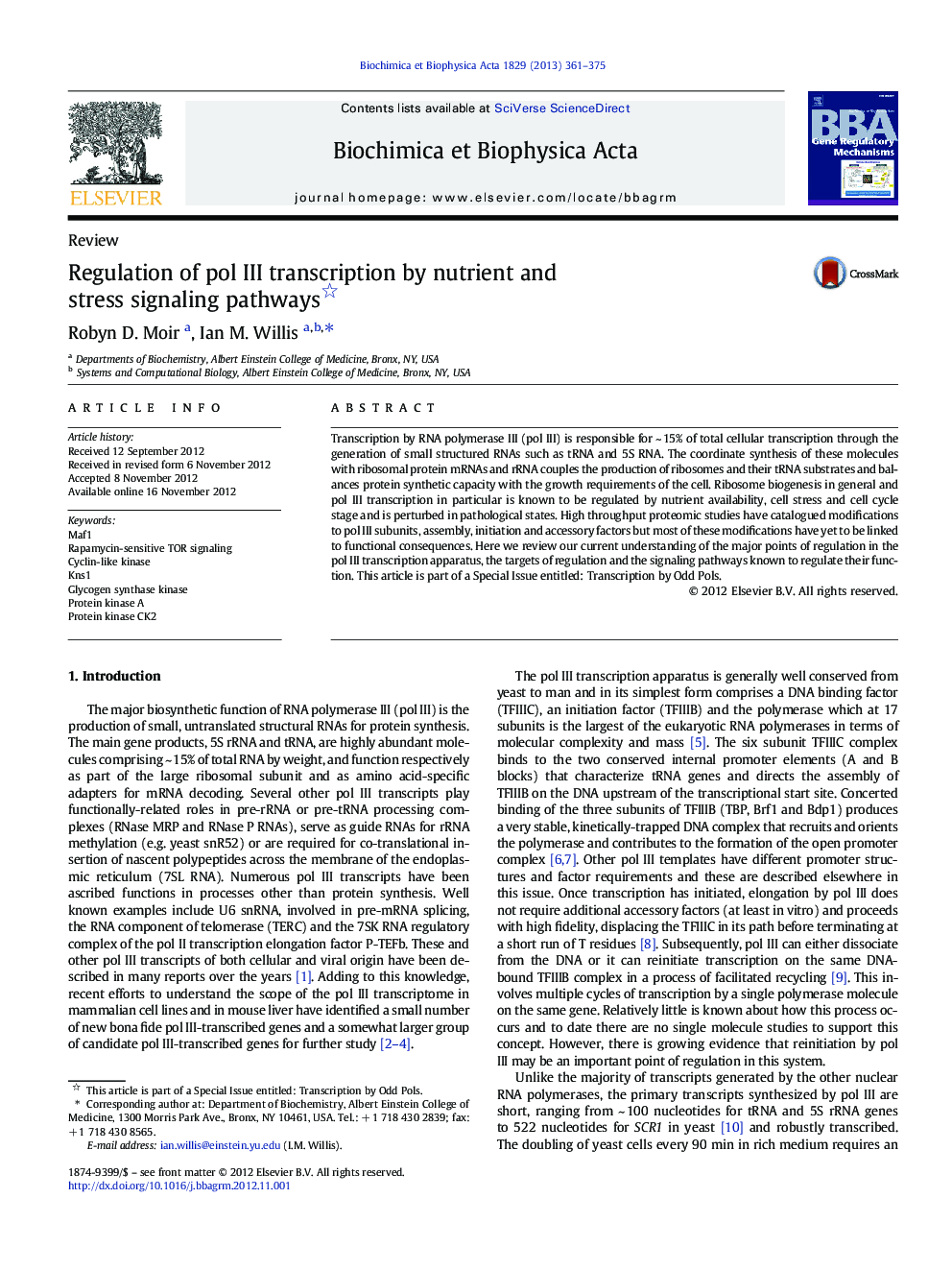| Article ID | Journal | Published Year | Pages | File Type |
|---|---|---|---|---|
| 1946508 | Biochimica et Biophysica Acta (BBA) - Gene Regulatory Mechanisms | 2013 | 15 Pages |
Transcription by RNA polymerase III (pol III) is responsible for ~ 15% of total cellular transcription through the generation of small structured RNAs such as tRNA and 5S RNA. The coordinate synthesis of these molecules with ribosomal protein mRNAs and rRNA couples the production of ribosomes and their tRNA substrates and balances protein synthetic capacity with the growth requirements of the cell. Ribosome biogenesis in general and pol III transcription in particular is known to be regulated by nutrient availability, cell stress and cell cycle stage and is perturbed in pathological states. High throughput proteomic studies have catalogued modifications to pol III subunits, assembly, initiation and accessory factors but most of these modifications have yet to be linked to functional consequences. Here we review our current understanding of the major points of regulation in the pol III transcription apparatus, the targets of regulation and the signaling pathways known to regulate their function. This article is part of a Special Issue entitled: Transcription by Odd Pols.
► Pol III transcription is regulated by multiple conserved signaling pathways. ► The Maf1 repressor is phosphoregulated in response to nutrient and stress signals. ► TFIIIB and pol III are also differentially modified under stress conditions. ► Changes to TFIIIB and pol III function allow Maf1-dependent repression. ► Failsafe mechanisms prevent pol III repression in the absence of cell stress.
